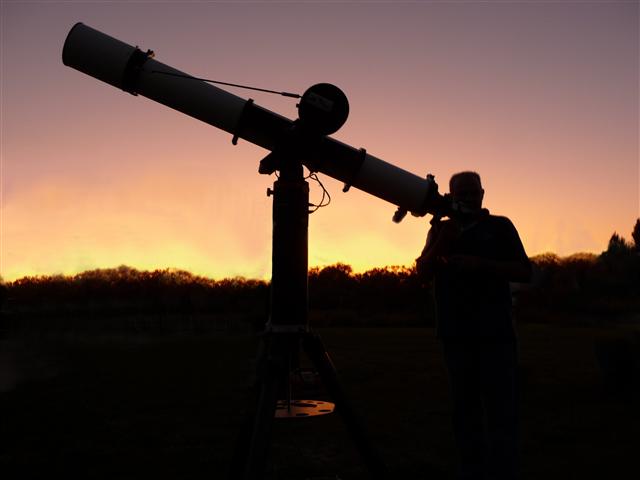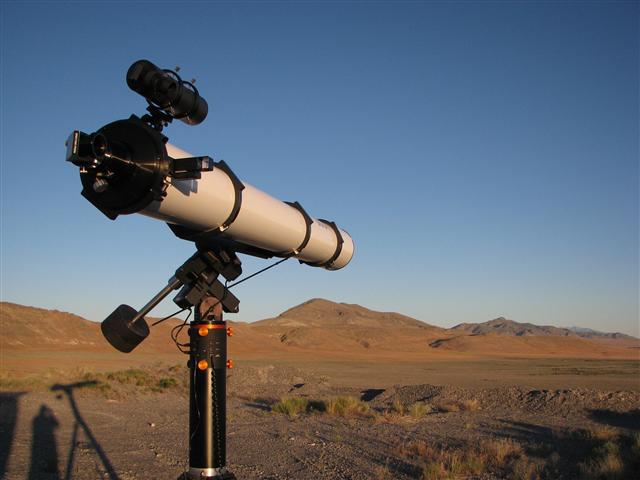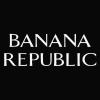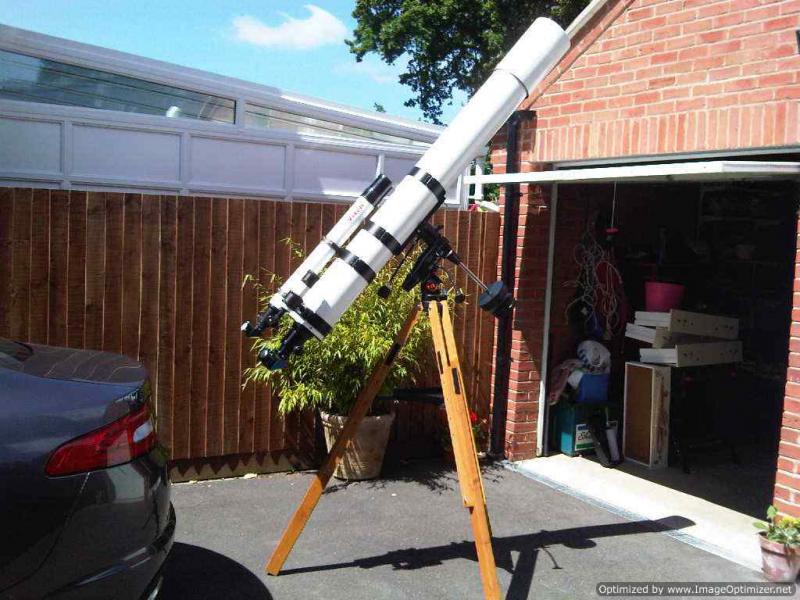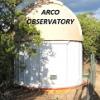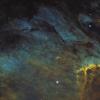From this point forward it will be known as B-O-B, Big ol' Buick

Stranger than fiction!
#51

Posted 28 September 2010 - 05:02 PM
From this point forward it will be known as B-O-B, Big ol' Buick
#52

Posted 28 September 2010 - 09:00 PM
#53

Posted 28 September 2010 - 09:12 PM
#54

Posted 28 September 2010 - 10:34 PM
#55

Posted 29 September 2010 - 03:26 AM
You are not showing it by writing down this unspecified number. You erred by stating that Rayleigh limit corresponds to the normalized spatial frequency ~0.9, instead of correct 0.82; can you specify how is the above number related to this?
Sure. Rayleigh limit = 1/(1.22*Fw) in lines per mm, where
F = the focal ratio, and w = the wavelength of light in mm.
(12*0.000512)=0.006144*1.22= 0.0074956 1/0.0074956=133.41 lines/mm
the f/12 MTF range is 0-155 l/mm. 133 l/mm is therefore normalized to 0.8580645...for simplicity (and using accepted rounding convention) i rounded up to 0.9.
--------------
So. Although it was considerate of you to expound on simple contrast theory, you need only have at least mentioned somewhere that low inherent contrast is what you have been referring to from the getgo---that would have made for a much briefer exchange. Also i'd note that plotting low inherent contrast thresholds on a high contrast MTF is pretty unconventional. But at least I now know where that line came from, which was the question i wished answered.
To continue,
Never satisfied. "Much better"? I'll volunteer a guess: I'd be on the right track if saying that a 100mm f/15 achromat is on par with best 100 mm f/10 apo there is?
What I am interested in is high spatial resolution observing. This class of resolution is only possible on bright high contrast targets at very high magnification: the Moon and double stars. And (seeing permitting access to the telescope's diffraction limit) occurs at roughly double the frequency domain you are focusing upon--line width of 1/2 the airy disk or the 0.8 frequency range -where there is indeed little to no difference in the resolution capability between these designs (by your own data). This is the context I have been basing my design equivalency arguments upon for years now. I don't know how popular this type of observing is compared to other types, but I do know that I am certainly not alone in my preference for it.
BTW, what on earth does that old cooldown graph of mine have to do with any of this discussion>? I knew from doing the thermal expansion coefficient calculations that tube expansion was irrelevant to this question long before Neil asked about the graph months ago. I would have been as surprised to see it in the article as I was to see my name in the acknowledgments of a piece I actually had nothing to do with in the first place. No apologies necessary or expected.
Oh, and I wouldn't tell R.N. Clark that magnification in visual observing isn't "worth writing a theory about" cause the poor guy wrote a whole book about just that...(hint: there are many telescopic topics worth investigating for which OSLO isn't the primary tool...just saying...)
#56

Posted 29 September 2010 - 05:13 AM
I expect a few people will be surprised to see their names appearing on the paper. Most had little to do directly with the work, true enough. That said, I have learned a great deal from their collective contributions - including your own - in previous threads that I initiated.
As for the thermal stuff, I can forward you some earlier data on these curious effects. Anyone interested can PM me and I'll fire through some of the findings.
Cheers,
Neil.
#58

Posted 29 September 2010 - 09:28 AM
Getting back to an automotive analogy, promoting the long focus achro vs. shorter apos reminds me somebody extolling the virtues of a big ol' Buick compared to modern sports cars having the latest in multi-valve engines. It's a tough sell to the auto enthusiast crowd.
Nice try...but doesn't seem to be a tough sell to NASCAR, nor its 75 million fans!!!
#59

Posted 29 September 2010 - 09:40 AM
OK, just checked the thread title.
Yup.
#60

Posted 29 September 2010 - 09:44 AM
Now you know.
Clear skies, Alan
#61

Posted 29 September 2010 - 10:03 AM
So ends another bizarre episode of "Stranger Than Fiction!"
#62

Posted 29 September 2010 - 10:15 AM
Too bad
#63

Posted 29 September 2010 - 10:18 AM
No sulking.
Just kiddin' around.
Sorry for the thread hijack...
OK, back to discussing your excellent report.
#64

Posted 29 September 2010 - 10:37 AM
No worries. My comments were not directed at you. You just got there before me, that's all.
Cheers,
Neil.
#65

Posted 29 September 2010 - 11:14 AM
Methinks someone's sulking
Too bad

Not me. I've always liked achromats, much preferably the traditional f/15 flavor.
But I do enjoy the portability and wider field abilities of their descendants.
Clear skies, Alan
#66

Posted 29 September 2010 - 01:21 PM
horses for courses.
#67

Posted 29 September 2010 - 11:59 PM
Thanks so much for the fine article. It shows a lot of hard work and dedication.
I have no problem believing that elevating an objective lens can improve seeing. I have no problem believing that fast ED doublets require much tighter tolerances to avoid spherical aberration. I am surprised that a typical quality 100mm f/15 achromat would have a polychromatic Strehl that is virtually identical to a typical quality f/6 ED doublet, but it's credible... Based on Vla's analysis, it appears that the greater spherical aberration and spherochromatism in the (typical) fast scope and the greater chromatic aberration in the longer focus achromat are essentially offsetting each other in terms of their effect on weighted, polychromatic Strehl.
By far the most interesting section from my perspective is the information contained in figure 5. If I am reading the graph correctly (which I am trying to because I think there may be a typo or two in the descriptive text--referencing the wrong points on the graph?), if you assume a 5% focus error is made (5% of peak contrast, that is) in either scope while focusing during bad seeing, then during moments of good seeing the fast ED doublet could have a polychromatic Strehl anywhere between 0.72 and 0.78 depending on which side of focus the mistake was made. The long focus scope does not have this asymmetry, and so would consistently have a value of 0.78 Strehl during the moments of good seeing. This, coupled with the benefits from being higher off the ground, is the first plausible explanation I have seen for why a longer focus scope would be able to "beat the seeing" when compared to a similar quality, faster scope.
At the end of the article, Neil mentions that he is worried about the classical achromat of simple crown/flint being relegated to history. I am curious, though... Most of the advantages ascribed to the long focus achromat in the article appear to be benefits to "long focus" more than benefits to "achromat". That is true for the higher objective. It is true for the "finicky" requirements for figure accuracy in fast scopes. I suspect it is true for the asymmetry around the E-line when the scope is mis-focused (perhaps Vla can comment here since he has presumably run other designs through OSLO, not just the two scopes covered in the report). If anything, this article appears to be calling out for the creation of slower apochromats whose correction is centered on the peak sensitivity of mesopic vision. Would not a long focus apochromat provide the best of both worlds? At least for a visual observer who wasn't worried about portability?
#68

Posted 30 September 2010 - 01:38 PM
Would not a long focus apochromat provide the best of both worlds?
Hi Jared
Indeed it would! And I have such a beast, a 85mm f/19 Zeiss doublet apo, so I have first-hand experience with one. It does indeed have the image stability of a long-focus refractor coupled with the color correction and contrast of an apochromat. Neil has told me he once had the privilege to observe with a 4" f/18 Cooke triplet apochromat and the visual performance was stunning.
People who hasn't tried a truly long-focus apochromat have no idea how well they perform. Aperture for aperture, it may well be the finest telescope ever designed for visual planetary observing. Before someone else states the obvious, I'd say that I am *perfectly* well aware that for the same outlay you could get a much bigger newtonian. But aperture for aperture, I'd say that there is no finer telescope for visual lunar-planetary than a f/15 to f/20 apochromat. And they *really* come into their own for solar observing.
Clear skies!
Thomas, Denmark
#69

Posted 30 September 2010 - 04:33 PM
Nice to hear from you again, and thank you for your post.
Yes, I’ll try to remedy the typos this weekend, when I’ve got some spare time. Thanks for letting me know.
Now, to try to answer your question:
On a cold February evening, earlier this year, I had the immense good fortune to observe Mars through a 4” F/18 triplet apochromat designed by H. Dennis Taylor and built in the last decade of the 19th century; so it predates Thomas’ superlative Zeiss by about a decade or so. The 9ft tube was placed on a massive equatorial mount and driven by the gravitational potential energy of a falling weight.
The high power views were magisterial; rock steady in an ink black sky. Despite the absence of lens coatings, there was no sign of ghosting. It was certainly one of the most memorable views of Mars I have ever had in a telescope, period. I had to get used to seeing it the ‘wrong way’ round again – the Syrtis Major looked like it does in all the old planetary books I have. That's because I was viewing its 13 arc second orb in the traditional manner, without the use of a diagonal. It was a truly enchanting experience to say the least!
The view was clearly ‘different’ to those rendered by my 4” F/15 achromat – and it definitely had a tad more ‘punch’ to it. That said, I think Vlad’s significant discovery of the different ways the energy is distributed in both kinds of refractor might play out here too. The essay talked about double stars in particular, but it must surely have some effects on planetary images in kind.
So, to answer your question, I’m in no particular hurry to upgrade my objective to ED. For me, I see it as classic case of diminishing returns. Upgrade to apochromat, for how much gain (and financial loss)? A few measly points on the Strehl scale?
Besides, as I spoke of before, I have an irrational love of the faint violet haloes my long focus achromat imparts to bright double stars, and to my eyes, it is the achromat that delivers the more beautiful views. I know it is ‘avoiding’ the reality of the more objective view delivered by the apochromat, but that's a predilection my own eyes have acquired. It's an entrely personal perspective.
Others have commented on the limitations of long focus instruments in regard to their delivery of wide, rich field views. But surely the evolution of the eyepiece will help remedy that. We already have 110 degree FOV oculars in existence and if that trend is set to continue, then we'll have long focus refractors enjoying wider fields of view than ever before. How large a field is rich field anyway? Personally, I think it's about two angular degrees, since the majority of objects can be well framed within this area. Indeed, I can already get that with a 56mm Plossl in a 4" F/15. The future promises to give me still wider views with a new generation of super-ultra wide eyepieces should I desire them.
With best wishes,
Neil.
#70

Posted 30 September 2010 - 04:51 PM
Also, I am assuming since you didn't raise an objection that my interpretation of the meaning of figure 5 is accurate--that the same 5% mis-focus in either scope would give a consistent level of correction during moments of good seeing in the long focus achromat, but could give either very good or very not nearly as good correction in the short focus ED scope depending on which side of focus the error was made on. Is that what you were trying to get across?
#71

Posted 30 September 2010 - 05:39 PM
I'm sure the grand master will chime in with more clarifications but here's my take on the situation;
As the article noted, it is the defocused nature of chromatic error in the achromat that places more energy in the central maxima for a given Strehl value and less in the rings area, especially the first bright ring. This effect would always be greater in an achromat compared to an apochromat of the same F ratio. How this plays out in more extended objects like planets, I'll leave to Vlad to expound upon.
You'll get all the relevant info here:
http://www.telescope...romatic_psf.htm
Cheers,
Neil.
#72

Posted 30 September 2010 - 10:40 PM
I also want to thank you making a great effort to address this controversy from a theoretical point of view.
My meager observational contribution from last winter did provide some motivation, I've continued to ponder different approaches that might give us some definitive evidence from the field. In July, I started to construct a chain of mirrors that could direct the extrafocal images from two scopes to a common digital camera. Still working on collimation issues but I think this will get used at some point in the future. Again, I am trying to prove the hypothesis (seeing improves with larger f/no) in the field.
The thermal issue was clearly a lingering issue for my observations, although I claimed at the time that thermals were minimized. Your paper provided real value there. Still needing to think through the apo vs achro analysis but my observation was based on two achros, no doubt of unequal spherical correction which is nicely discussed in your paper.
Again, kudos...
#73

Posted 01 October 2010 - 10:03 AM
Good to hear from you!
Thank you for your comments. Much appreciated.
Cheers,
Neil.
#74

Posted 01 October 2010 - 03:50 PM
I keep looking at the view count and the replies for this "fire storm" topic. I'm thinking it might set a record.
Thanks again for your time, and your hard work.
#75

Posted 03 October 2010 - 06:35 AM
Thanks for the compliments. I misspelled your surname. Corrections in the works.
Vlad worked on this like a Trojan too. I don't know about records, but I think he deserves the gold medal.
With best wishes,
Neil.



